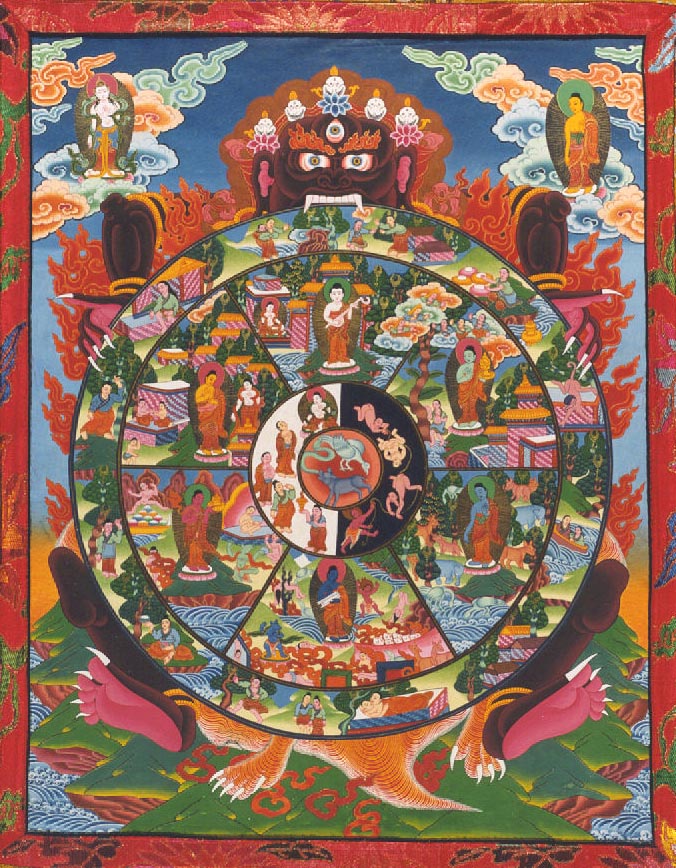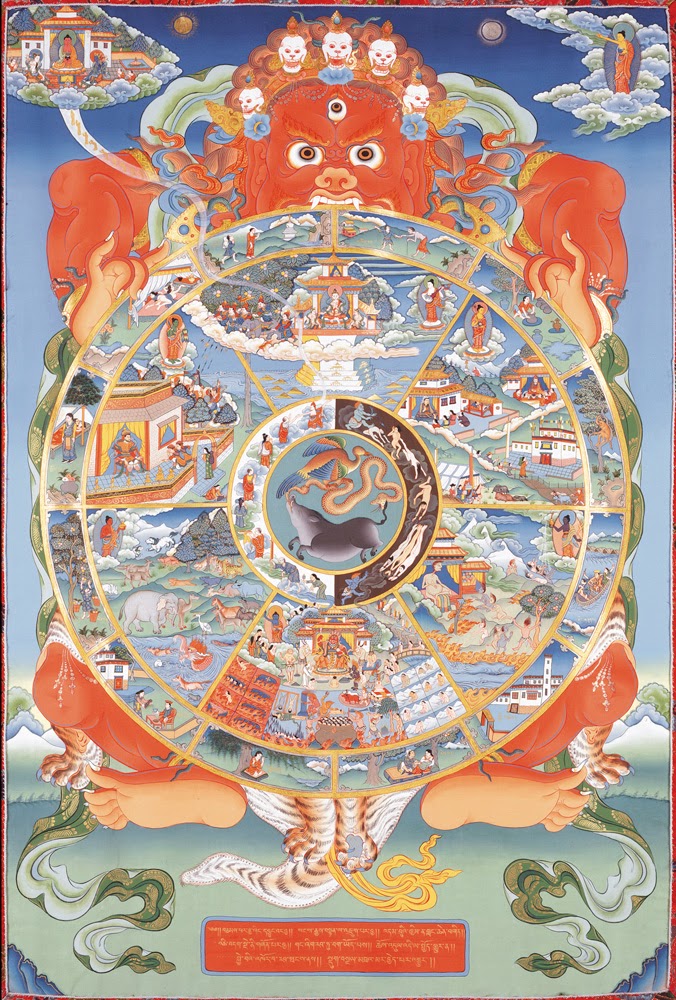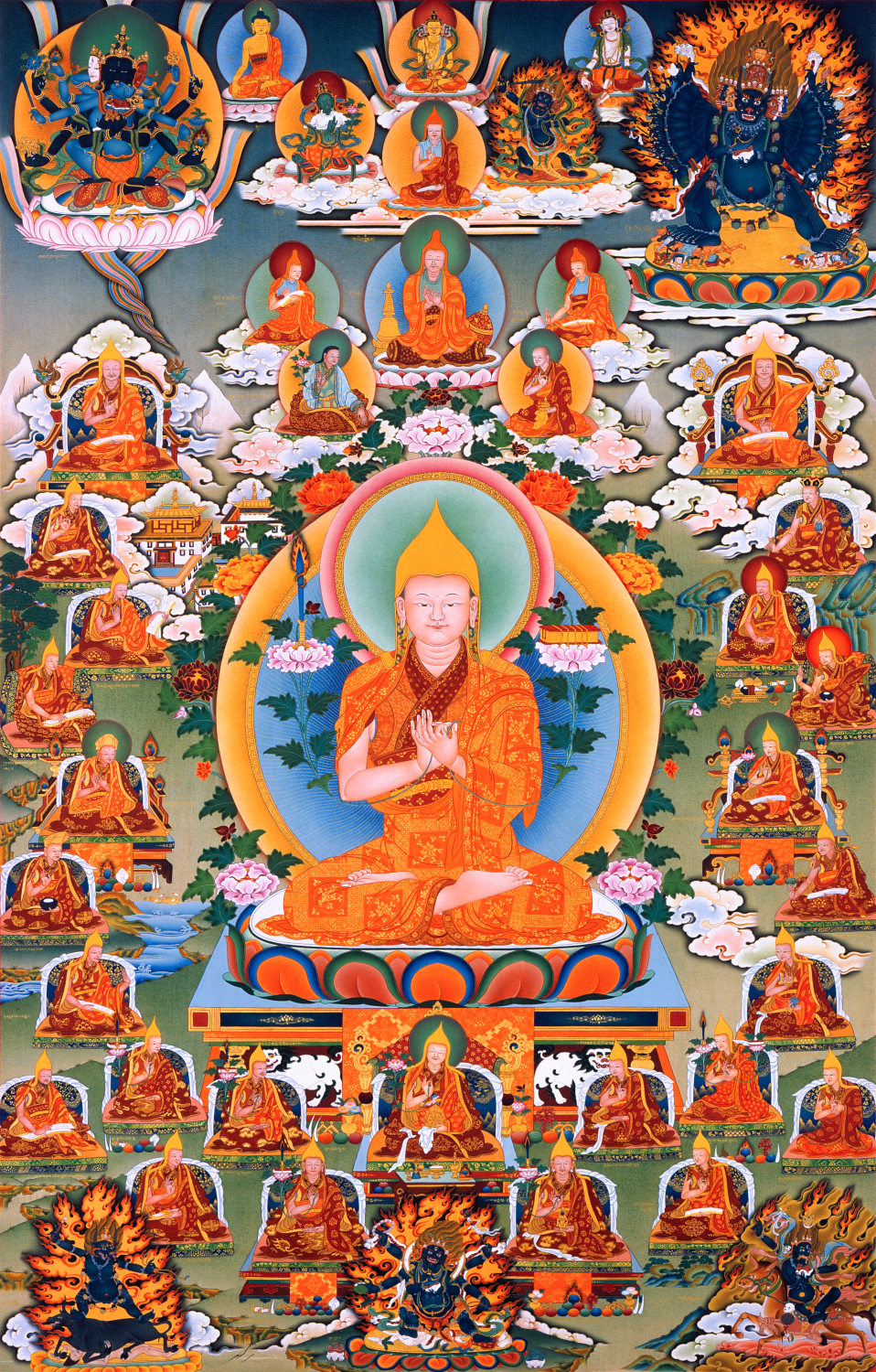The Lam Rim has a lot more to say about these "Three Poisons" and their antidotes. In the meantime, here are a few thoughts from the Bible on the subject:
But those who want to be rich fall into temptation
and are trapped by many senseless and harmful desires
that plunge people into ruin and destruction.
For the love of money is a root of all kinds of evil,
and in their eagerness to be rich
some have wandered away from the faith
and pierced themselves with many pains.
-- 1 Timothy 6:9,10
"You have heard that it was said,
"You shall love your neighbor and hate your enemy.'
But I say to you,
Love your enemies and pray for those who persecute you,
so that you may be children of your Father in heaven...."
-- Matthew 5:43-45a
...you must no longer live as the Gentiles live,
in the futility of their minds.
They are darkened in their understanding,
alienated from the life of God
because of their ignorance and hardness of heart.
-- Ephesians 4:17b,18
"What do you think, Kalamas? When greed arises in a person, does it arise for welfare or for harm?"
"For harm, lord."
"And this greedy person, overcome by greed, his mind possessed by greed, kills living beings, takes what is not given, goes after another person's wife, tells lies, and induces others to do likewise, all of which is for long-term harm & suffering."
"Yes, lord."
"Now, what do you think, Kalamas? When aversion arises in a person, does it arise for welfare or for harm?"
"For harm, lord."
"And this aversive person, overcome by aversion, his mind possessed by aversion, kills living beings, takes what is not given, goes after another person's wife, tells lies, and induces others to do likewise, all of which is for long-term harm & suffering."
"Yes, lord."
"Now, what do you think, Kalamas? When delusion arises in a person, does it arise for welfare or for harm?"
"For harm, lord."
"And this deluded person, overcome by delusion, his mind possessed by delusion, kills living beings, takes what is not given, goes after another person's wife, tells lies, and induces others to do likewise, all of which is for long-term harm & suffering."
"Yes, lord."
"So what do you think, Kalamas: Are these qualities skillful or unskillful?"
"Unskillful, lord."
"Blameworthy or blameless?"
"Blameworthy, lord."
"Criticized by the wise or praised by the wise?"
"Criticized by the wise, lord."
"When adopted & carried out, do they lead to harm & to suffering, or not?"
"When adopted & carried out, they lead to harm & to suffering. That is how it appears to us."
"So, as I said, Kalamas: 'Don't go by reports, by legends, by traditions, by scripture, by logical conjecture, by inference, by analogies, by agreement through pondering views, by probability, or by the thought, "This contemplative is our teacher." When you know for yourselves that, "These qualities are unskillful; these qualities are blameworthy; these qualities are criticized by the wise; these qualities, when adopted & carried out, lead to harm & to suffering" — then you should abandon them.' Thus was it said. And in reference to this was it said....
".... What do you think, Kalamas? When lack of greed arises in a person, does it arise for welfare or for harm?"
"For welfare, lord."
"And this ungreedy person, not overcome by greed, his mind not possessed by greed, doesn't kill living beings, take what is not given, go after another person's wife, tell lies, or induce others to do likewise, all of which is for long-term welfare & happiness."
"Yes, lord...."
"Kalama Sutta: To the Kalamas" (AN 3.65).
Translated from the Pali by Thanissaro Bhikkhu.
Access to Insight, 30 November 2013




